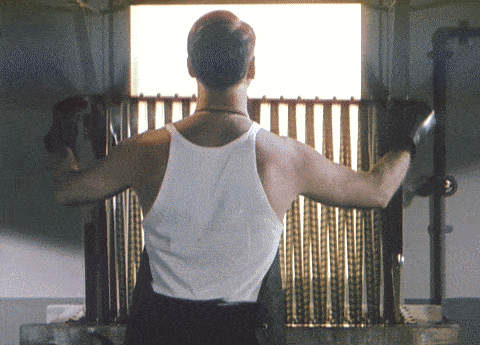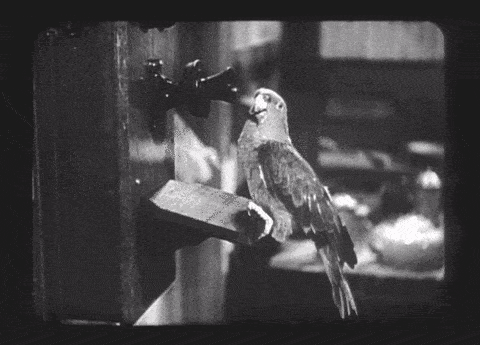Is there anything more indulgent than watching a movie about the movies? Lose yourself in the world of Old Hollywood with us this month as we watch films about the entertainment industry. Today Adam and Samantha examine Hollywood Cavalcade from 1939.


ADAM WILLIAMS: Hollywood Cavalcade opens like a diabolic Russian doll. Alice Faye portrays Molly Adair, an understudy filling in for a superstar in a play in which a woman pretends to doped out of her mind in order to provoke her husband to horsewhip her to prove that he loves her. Got all that? Don Ameche is suitably impressed—he, in turn, pretends to be a reporter to gain access to Molly’s dressing room where he entices her with a fraudulent contract to get her away from Broadway and into the nascent moving picture industry in California. Ameche as the director Michael Linnett Connors understands that if you can dream it, then it can be captured—and he has the requisite sets, bright lights, and gumption to make things happen. Molly Adair provides the one thing he is missing: the human element. Along with his devoted Jewish lawyer, Dave Spingold (J. Edward Bromberg), the three embark on a journey of filmmaking during the halcyon days of Hollywood.
SAMANTHA GLASSER: Sometimes in these movies the conflict seems to have an obvious answer; the stakes aren't real. Here, there are lots of moving pieces and loyalty involved, so the solution isn't clear and we are more involved in the story.
AW: Maybe I went into this with low expectations, but I was also impressed with the interplay between the characters. Particularly poignant is Bromberg’s gradual disillusionment with Connors’ increasingly erratic behavior. Days after watching this, it occurred to me that this could be looked at as a variation on another 1939 classic about co-dependency and imbalanced lives. Alice Faye is our protagonist swept up into a world of illusion along with someone without heart (Ameche), someone without courage (Bromberg), and someone without a brain (Stuart Erwin as the slow-witted cameraman). Admittedly, the comparison doesn’t go much further than that, but it did inspire me to think how this film—which is a good deal of fun—could’ve been made better.

SG: Hollywood Cavalcade came out in THE YEAR, and when you compare it to classics like Gone With the Wind, The Wizard of Oz, or Mr. Smith Goes to Washington it can't measure up. However a good amount of money and care was put into its production. The film plays very much like a biopic without it being directly based on a person's life. Mack Sennett was technical advisor on the film, and some historians say it was loosely based on his relationship with Mabel Normand, but I would specify that it is very loose. I found correlation between Ameche's character and Frank Capra, although Capra's star rose basically steadily.

AW: I hadn’t thought of Capra, but he was likely in the writer’s minds—Ameche certainly portrays a hardscrabble New York-raised Italian. His character is also a pioneer (and dipsomaniac) like D.W. Griffith, a profligate like Cecil B. DeMille, and with his riding breeches and perfectly quaffed hair he resembles Von Sternberg. The game of Catch the Reference is fun—"Hey, there goes Fatty Arbuckle!” Part of that game is nitpicking. Almost by design, movies about movies bring out the pedant in all of us. There’s not too much point dwelling over the accuracy of The Jazz Singer/introduction of sound scenes—volumes have been written parsing the facts from the legend—but I do have one juicy item for IMDb’s “Goofs” section: the movie’s opening scene, which takes place in 1913, features a production of Jules Eckert Goodman’s The Man Who Came Back. However, this play wasn’t published until 1916.
LYLE STOUT (DONALD MEEK): A rock's a rock. A tree's a tree. Shoot it in Griffith Park!

SG: The credits give Jolson a big mention for reprising the Kol Nidre scene, so I was hoping we would see more of him. I'm a big fan. Jolie also appeared with Faye the same year in Rose of Washington Square. Jolson and wife Ruby Keeler were among the many celebrities who turned out for the premiere of the Hollywood Cavalcade at the Four Star Theatre in Los Angeles. Seats were $10 and a total of $7,300 was raised for the Motion Picture Relief Fund. Also in attendance were Shirley Temple, Joan Crawford, Hedy Lamarr, Linda Darnell, Constance Bennett, Gilbert Roland, Lana Turner, Billie Burke, George and Gracie Allen, Jack Benny and Mary Livingstone, Myrna Loy, Claudette Colbert, and Tyrone Power.

At first costume designer Herschel McCoy's attempts at period costumes are acceptable, but as the teens turn to the 20s, we get late-30s broad shoulders and curls instead of boxy dresses, rolled stockings and cloche hats. Some of the period films of this era don't even make the attempt, so I applaud his halfhearted effort.
Because so many people who were present in the early days of movie-making are in this film, there is an authenticity that a lot of other movies about the movies fail to achieve. Damfino Patricia Elliot Tobias said that in order to avoid Faye flinching in the scenes were she was getting hit with pies, Buster Keaton didn't tell her when he would be throwing them. They used the first take when she is hit for the first time, and Keaton felt bad about it because it hit her pretty hard. It took a while for her to warm to him, but eventually they got along.
CONNORS: Get out! Can't you see I'm dying?

AW: Hollywood Cavalcade is self-congratulatory industry back-slapping—a celebration of how far the moving picture had come in 50 years. This required the most advanced photography: veteran DPs making use of sumptuous Technicolor. This being said, I found the curmudgeonly 1940 review in The Irish Times most amusing. The anonymous, and presumably pickled, reviewer writes, “The film is in “glorious”—pardon, it’s moved up a step—“triumphant” technicolour [sic]. In other words, everyone looks slightly toasted. You get used to it, right enough. After all, people get used to sleeping on sharpened nails, points uppermost.” It just goes to show, there will always be complaints.

SG: Alice Faye is gorgeous in Technicolor, and I didn't even notice until after the movie was over that she didn't sing. The music selections are excellent, especially the use of "Whispering" as a love theme for Ameche and Faye. Ameche is wonderful in the Svengali role. His voice sounds like and contains the manic earnestness of Ross Alexander and he has a great head of hair.
Howard Barnes of the New York Herald Tribune said, "When it is dealing with the great era of screen slapstick it is tremendously colorful and entertaining. When it resolves into an individual narrative, involving composite film figures, it grows romantically dull, but it would have been virtually impossible to have matched the gayety and gusto of the early sequences." I think that sentiment is good, although I wouldn't altogether dismiss the sequences between. This is a movie heavily laden with nostalgia, and I lapped it up. 3 stars.

AW: I agree with that assessment. There is a jewel encased within Hollywood Cavalcade and it’s the miniature Mack Sennett-style slapstick comedy “Help, Murder, Police” starring Faye and Buster Keaton (and, in real life, separately directed by Malcolm St. Clair). The film-within-a-film is a joy to watch while the film itself is merely good. Three stars.
